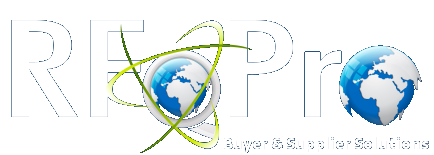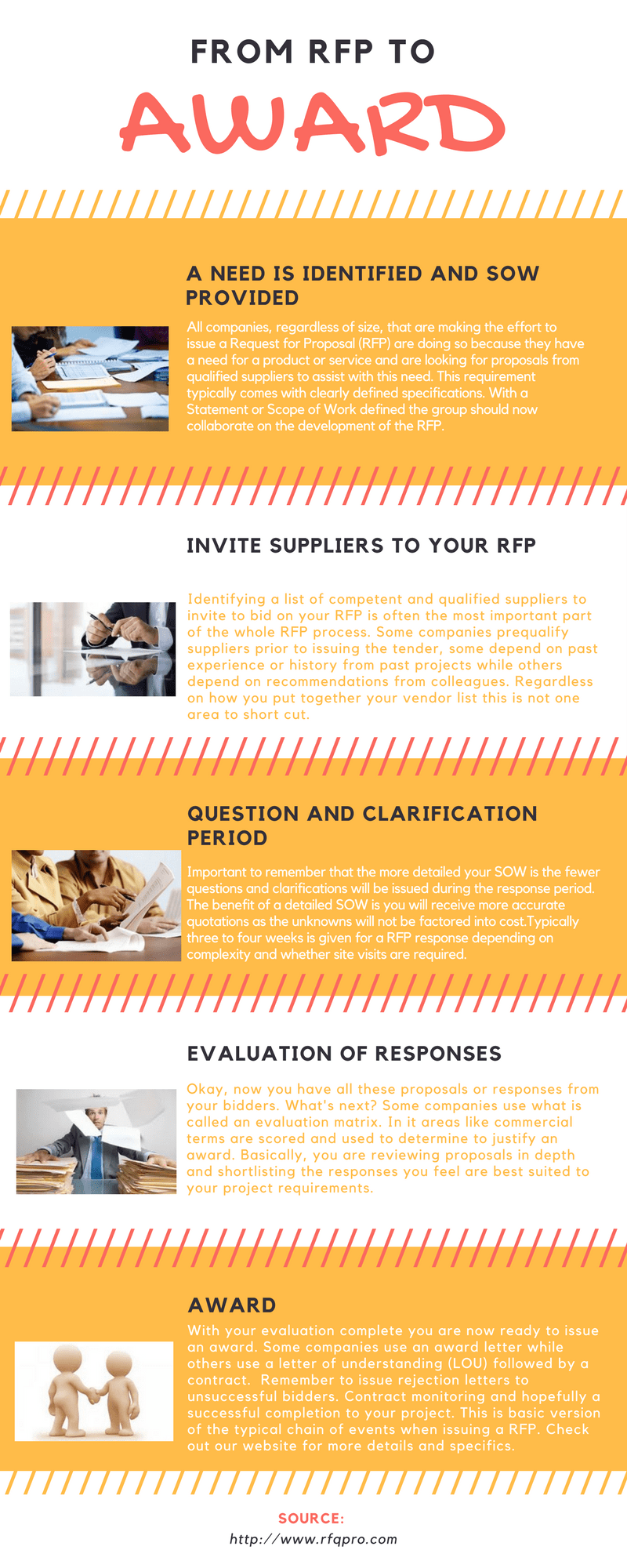Five key steps from when you issue a RFP to when you Award. The following RFP infographic provides a basic summary of the chain of events which often transpire when you are required to issue a request for proposal for a product or service. Some of these steps and the amount of time required to properly issue, evaluate and award a RFP are often underestimated. Hopefully, this graphic on the 5 steps on the RFP to Award process will provide some useful insight when it comes to the process.
5 Step Summary – FROM RFP TO AWARD
Step 1 – A need is identified and SOW provided
All companies, regardless of size, that are making the effort to issue a Request for Proposal (RFP) are doing so because they have a need for a product or service and are looking for proposals from qualified suppliers to assist with this need. This requirement typically comes with clearly defined specifications. With a Statement or Scope of Work defined the group should now collaborate on the development of the RFP.
Step 2 – Invite suppliers to your RFP
Identifying a list of competent and qualified suppliers to invite to bid on your RFP is often the most important part of the whole RFP process. Some companies prequalify suppliers prior to issuing the tender, some depend on experience or history from past projects, while others depend on recommendations from colleagues. Regardless, of how you put together your vendor list, this is not one area to short cut.
Step 3 – Question and clarification period
Important to remember that the more detailed your SOW is the fewer questions and clarifications will surface during the response period. The benefit of a detailed SOW is you will receive more accurate quotations as unknowns will not be factored into cost.Typically, three to four weeks is given for a RFP response depending on complexity and whether site visits are required.
Step 4 – Evaluation of responses
Okay, now you have all these proposals or responses from your bidders. What’s next? Some companies use what is called an evaluation matrix. In it, areas like commercial terms are scored and used to justify an award. Basically, you are reviewing proposals in depth and shortlisting the responses you feel are best suited to your project requirements.
Step 5 – Award
With your evaluation complete, you are now ready to issue an award. Some companies use an award letter and PO, while others use a letter of understanding (LOU) followed by a contract. Remember to issue rejection letters to unsuccessful bidders. Contract monitoring and hopefully a successful completion to your project. This is a very basic overview and summary of the typical chain of events which occur when issuing a RFP. Check out our website for more details on buyer and supplier solutions like sample RFP’s, response letters and any other forms you might be searching for.
If you have found this information to be useful, please consider sharing this infographic on the 5 steps from RFP to an Award.


